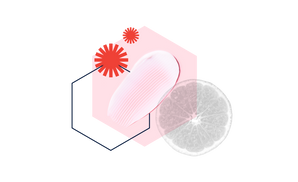BRP is now mainstream
We’re happy that the term “Barrier Repair” is now mainstream, and people are starting to take the barrier seriously. With this rise in popularity, most brands are now plastering the term “barrier” on all their products. However, just because something contains Ceramides doesn’t mean that it is a barrier repair product.
Generations of Barrier Repair Products (BRPs)

First Generation Barrier Repair Products
Before we look into what barrier repair products truly are, let’s first look into their history. The first ever barrier repair products were cold creams which were made with beeswax, animal fat, or vegetable oil. The most famous one is Galen’s Cold Cream (150 C.E.) in second-century Greece. It consisted of Beeswax, Rosewater, some Almond or Olive oil and borax as an emulsifier. In a sense, preventing moisture loss is a way to help the barrier; that is why these kinds of creams are what we consider “First Generation Barrier Repair”: they don’t directly repair the barrier, but they promote an environment where the barrier can repair itself.
Second Generation Barrier Repair Products
Skincare evolved drastically afterward, and various skincare ingredients were developed; the most interesting among them is Refined Petrolatum (Petroleum Jelly). For over 150 years, Petrolatum has been in medicine cabinets as the first aid for wounds and irritation. It has been well studied to form a vapour permeable barrier on the surface of the skin to prevent moisture loss. The great thing about it is that it acts fast (creating sort of a topical band-aid) in reducing water loss, and it doesn’t discriminate between different types of barrier damage. This is in addition to its other benefits like anti-inflammatory etc. For this reason, Petrolatum and Petrolatum-containing products are what we consider “Second Generation” Barrier Repair Products: they immediately reduce water loss no matter what the skin damage is.
Third Generation Barrier Repair Products
Although Petrolatum has many advantages, it also has some disadvantages. One particular drawback is that it cannot repair the barrier. In a study done by the group of Dr. Elias, they compared barrier recovery of non-physiologic lipids (Petrolatum) vs. physiologic lipids (Ceramides, Cholesterol and Fatty acids) vs. a combination of both (1996). After abrogating the skin with acetone, the sites with petrolatum showed the highest percentage of barrier repair after 45 minutes. However, after 2 hours, 4 hours and 8 hours, it became apparent that Petrolatum lagged behind physiologic lipids in terms of barrier repair. What’s interesting is that at 8 hours after acetone application, the site with petrolatum had a more delayed recovery compared to the one without any treatment at all. Upon investigation using Scanning Electron Microscopy (SEM), they’ve found out that Petrolatum penetrates the Stratum Corneum and even the lamellar lipids to seal off all possible ways for water loss. The consequence here is that the way for lamellar bodies and corresponding repair enzymes is also blocked, leading to a delayed barrier recovery compared to normal. Another important note is that the occlusion by petrolatum can be a signal to the skin that the damage has already been repaired and that the skin doesn’t need to send repair mechanisms. For this reason, it is important to combine it with Physiologic lipids.
Barrier Recovery after Various Topical Treatments
| Treatment | 45 Minutes | 2 Hours | 4 Hours | 8 Hours |
| Acetone + air exposure or vehicle | 15 | 25 | 35 | 55 |
| Acetone + Physiologic lipids (3:1:1) | 10 | 55 | 75 | 90 |
| Acetone + Petrolatum | 50 | 50 | 50 | 40 |
| Acetone + Petrolatum + Physiologic lipids (3:1:1) | 55 | 70 | 90 | 95 |
Source: Fixing the Barrier - Theory and Rational Development, Elias, P., in the book Skin Barrier, Elias and Feingold p595-596
This is where physiologic lipids come in. Although Petrolatum is great for immediate protection, Physiologic lipids like Ceramides, Cholesterol and Fatty acids are better in the long run. If you notice in the table above, the site with only physiologic lipids was lagging at the start. This is because it takes a while for physiologic lipids to be taken in and processed before they can repair the damage. Ultimately, the treatment that led to the best repair is the one with both Petrolatum and Physiologic lipids. This is the first time that an ingredient is directly involved in the repair of the barrier. For these reasons, products with physiologic lipids (Ceramides, Cholesterol and Fatty acids) are what we consider the 3rd Generation Barrier Repair Products.
There’s an important caveat that we should note. Products with physiologic lipids should always be tested to make sure that they are in an optimal ratio. As previously studied, the absence of one of the three components (or even changing the ratio) can have vast effects on the barrier repair ability of the product. In certain instances, they can do more harm than good.
With the rise in the popularity of barrier repair products, the term “barrier repair” is overused and loosely applied to almost anything. Usually, anything with Ceramides is plastered with barrier-repair on its bottle. On the other hand, a popular ingredient called Ceramide Complex (SK-INFLUX V) by Evonik has become so pervasive that almost all barrier repair products have it. Its INCI is Ceramide NP; Ceramide AP; Ceramide EOP; Phytosphingosine; Cholesterol; Sodium Lauroyl Lactylate; Carbomer; Xanthan Gum. If you find this combination in your barrier repair moisturizer, it usually means that they are using this complex. On its own, this complex is great; it has Ceramides, Cholesterol and some fatty acids; it is even in the correct ratio. The downside is that this ingredient contains only 2.5% active matter, which means if you use it in its suggested concentration, you end up with 0.0375 to 0.0625% Ceramides which is way below what is suggested in the literature. To add to that, adding this complex to a formulation doesn’t automatically result in barrier repair. Plant oils can have free fatty acids that can change the ratio of the lipids.
Fourth Generation Barrier Repair Products
In contrast to third generation products that repair the barrier directly, Fourth Generation Barrier Repair Products target the skin's inherent system that orchestrates barrier repair: Peroxisome Proliferator-Activated Receptors (PPARs)
PPARs are nuclear hormone receptors like Retinoid Receptors that are present in the nuclear envelope of nucleated cells. Their main function involves orchestrating barrier repair, corneocyte maturation and regulation of inflammation. Interestingly, the ligands (activators) for PPARs aren't necessarily new ingredients. Some have been used in skincare for a long time, it's just that their mechanism haven't been elucidated until now. Examples of these are Azelaic acid, Linoleic acid and other Fatty acids.
We'll be discussing PPARs and Advanced Barrier Repair in a separate blog so stay tuned.


